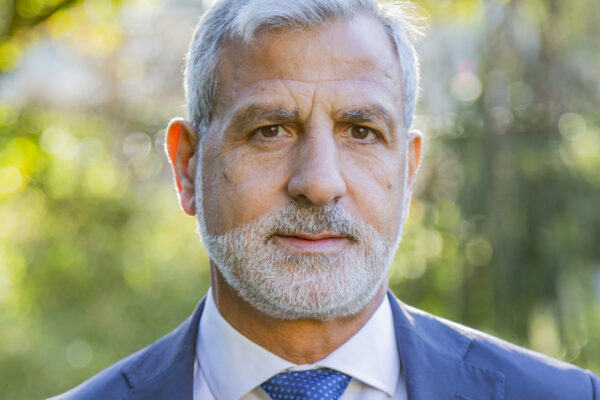
The global economy avoided recession last year, but with markets facing economic, geopolitical and climate challenges, how should portfolios be positioned in 2024?
The global economy and markets defied most gloomy forecasts for 2023. Despite the fastest pace of monetary tightening in modern times – the US Federal Reserve has hiked interest rates 11 times since March 2022 – a US recession has not materialised. The world’s largest economy grew above its potential again, at close to 2.5 per cent.
Meanwhile, global stockmarkets recorded their strongest year since 2019, driven by a huge rally in the final two months of 2023.
While the MSCI World index surged 22 per cent, the tech-heavy Nasdaq 100 showcased its most robust annual performance since the dotcom boom of 1999. Besides the artificial intelligence (AI)-driven surge, the Fed’s year-end pivot toward a more accommodating stance played a decisive role in pushing tech stocks to record-breaking highs. The S&P 500 index, which has risen 14 per cent since October and 24 per cent over the year, ended 2023 just shy of its all-time record, largely driven by seven stocks, big tech names stitched loosely together through the hot theme of AI.
This dramatic shift in investors’ expectations, with rapid interest rate cuts expected this year, drove a massive two-month rally in bond prices too, which rescued fixed income markets from a third straight year of declines.
“2023 can be summarised in three words: resilience beats recession,” says Deutsche Bank’s global CIO Christian Nolting. “Global economies kept growing despite geopolitical shocks, persistent inflation and a hesitant Chinese recovery.”
At the onset of 2023, the Chinese post-Covid reopening was expected to boost Chinese growth and fuel global inflation, but a year after the end of its zero-Covid measures, the Chinese economy is suffocating from worsening deflation and property crisis.
Major turbulence in the financial industry in March and bond market reversals in October shocked markets, but most asset classes proved resilient too, with inflation retreating from multi-decade highs. But with the tragic war between Israel and Hamas, the ongoing conflict between Russia and Ukraine and rising US-China tensions, geopolitical risk has increased, spooking wealth holders and driving them to keep their assets in cash, which offers attractive yields.
Looking ahead
So, what can investors expect in 2024? This year is likely to be a “decent year” for investors, according to Deutsche Bank. Despite economic, geopolitical and climate challenges, the outlook for main asset classes in 2024 is good, but risk management remains crucial.
“We don't see a recession on the horizon,” states Citi Global Wealth’s CIO David Bailin, predicting ‘rolling recessions’ end in 2024. A slow period of economic growth at the beginning of this year will be followed by an acceleration in the latter part of 2024 and “much higher expected EPS growth” for 2025. “Given that markets anticipate the economy, we could see acceleration in markets take place, once they get a visual sense of what earnings could be in 2025,” says Mr Bailin. This is a good setup for investors, he believes, also considering investor sentiment is today “somewhat negative”.
October was the first time since 2020 that Citi went from an underweight, and then a neutral position, to an overweight in equities.
After a year in which most S&P 500 firms saw earnings per share declines while employment and wages grew solidly, Mr Bailin predicts a reversal in favour of corporate profits beginning in 2024. “While we don’t expect another 20 per cent surge for the S&P 500, we expect returns to broaden, with larger gains for the ‘average’ stock,” he says. This view is expressed with an overweight to the S&P 500 Equal Weight Index and exposures to profitable small and mid-cap growth shares.
Remaining invested
A key recommendation is that clients remain invested. “We want our clients to be fully exposed to the market, in equities and bonds,” says Mr Bailin, believing that a 60/40 portfolio can have “terrific performance over the course of the next two years and potentially beyond”. Mr Bailin also acknowledges that his call to buy bonds a year ago was “earlier than the optimal time”.
But despite significant volatility in the fixed income market, the bank has seen an “enormous amount of money flow into bonds”, with clients retaining and adding to bond positions. With the biggest surprise last year being the strength of the labour market in the US, many of the bank’s views at the outset of 2023 have only been delayed, he says.
“Our confidence level today, relative to a year ago, is far higher based on the data we're seeing.”
JP Morgan Private Bank’s core market convictions for this year have been reinforced by the Fed’s December decision to keep interest rates unchanged and pencil in at least three cuts in 2024. This was combined with greater confidence that central banks, including the European Central Bank and the Bank of England, “have put further hikes in the rear view mirror”, believes Grace Peters, global head of investment strategy at JP Morgan Private Bank.
Inflation will likely settle, as price pressures are abating, and the Fed’s own forecasts show a durable path toward its 2 per cent inflation target. But with the Fed’s tone more dovish, the opportunity cost of holding cash looks even greater. Five per cent yields on cash and low volatility have been “a magnet” for client assets. This phenomenon is global, but is particularly powerful in the US, where clients have more than twice the allocation to short-term Treasuries and money markets as their international peers.

Bonds are more competitive, and quality bonds can provide both income at shorter maturities, and protection against economic weakness at the long end, believes Ms Peters. Stocks will likely reach new highs as equity markets could be entering “the sweet spot in terms of inflation, earnings growth, and monetary policy”.
Credit stress could be more limited to areas such as commercial real estate and select pockets of corporate debt. “Overall, markets are moving quickly, and we see more opportunities for multi-asset investors in the year ahead,” says Ms Peters. Clients need not worry having missed the boat. The last time the Fed lowered interest rates pre-emptively in 2019, the S&P 500 rallied around 30 per cent and investment grade bonds returned nearly 9 per cent that year, she says.
Paul Donovan, chief economist at UBS Global Wealth Management, predicts “a softish landing” in the developed world, adding that the slowdown ahead is “inevitable” given the interest rate increases are starting to exert themselves on credit demand and slow down people’s spending power, who already have debt.
War and geopolitical uncertainty might have increased the perceived safety of cash, says Themis Themistocleous, CIO EMEA at UBS GWM. But with interest rates coming down, investors need to look at limiting their overall cash balances and take opportunities to optimise yields. “Investors should use a combination of fixed term deposits, bond ladders and structured solutions to lock in the currently elevated yields and cover expected portfolio withdrawals over the next five years.”
Quality is the theme that runs through all investment recommendations. “In the fixed income space, lower interest rate expectations will drive yields lower, making this a good time to buy quality bonds, which combine attractive yields with the potential for capital appreciation. It can also serve as a portfolio hedge against downside scenarios,” says Mr Themistocleous.
The global bank is “more cautious” with riskier credit like high yield, as potential defaults will rise in a slowing economy.
In the equity space, quality companies with strong balance sheets and high profitability, including many in the technology sector, should be best positioned to generate more resilient earnings in an environment of weaker growth.
Diversification across asset classes and regions should be most investors’ “first line of defence” to hedge their portfolios in the year ahead, particularly against the backdrop of war and geopolitical uncertainty, says Mr Themistocleous.

Investors can also further insulate portfolios against specific risks through capital preservation strategies, alternatives, or positions in oil and gold, he adds.
With 2024 being the biggest election year in history, including the US presidential election, volatility is on the cards. But while geopolitical risk is closely monitored by investors, it is “very hard” for markets to price it, according to UBS.
Delayed recession
Asset managers tend to be more cautious, emphasising the importance of diversification.
The global economy should continue to prove resilient to the real rate shock in the first half of 2024, but buffers will “tire out” in the second half of the year, as recession finally hits, according to Carmignac.
“The transmission of the rate shock to economies has been slowed by transitory factors that will be exhausted over the course of 2024,” predicts Raphael Gallardo, chief economist at Carmignac. He believes a ‘slow landing’ should continue in the first half of this year, followed by a recession in the second half, led by the US.
This year, in equities, after the wild run of the so-called ‘magnificent seven’ – including Apple, Microsoft, Alphabet Amazon, Nvidia, Tesla and Meta – and obesity treatment stocks, conditions are in place for the broadening of performance drivers. This means allocation to defensive sectors via healthcare and staples on one hand and some higher return potential via emerging markets on the other, according to the French asset manager.
“Emerging markets are suitable to express such a strive for diversification, with the help of a lower US dollar and the expected stabilisation of China’s economy over the coming quarters,” says Kevin Thozet, member of the investment committee at Carmignac. “Opportunities may arise in previously sold-off markets like Asia or Latin America where trade balances are well oriented.”
Schroders’ CIO, Johanna Kyrklund, predicts recession will be delayed until the end of 2024, mainly because consumer balance sheets are still very strong. “This means that, for now, we're still in a relatively benign phase where growth is still holding up, and there is tactical opportunity in equities.”
Policy divergence across major economies will continue in 2024, creating investment opportunities. While the US stockmarket is “reassuringly expensive because there's a quality of earnings there not to be found elsewhere, broader markets have treaded water in recent months and valuations don't look as stretched, outside the US”, she says.
And valuations will be more important going forward than they have been in the past decade, with unloved markets such as China shunned by international investors, while the UK is showing very low valuations compared to history.
“The capitalisation of the super seven today is greater than the entire market capitalisation of China, Japan, the UK and France combined, and this doesn't seem quite right now,” says Schroders’ head of global and thematic equities Alex Tedder. “These inconsistencies or polarisations can persist for quite long periods, or longer than people expect. But at some point, they do close, and will reverse,” he says.
“We're not negative on the super seven as a group, but we do think the rest of the world may well catch up quite sharply, fairly soon.”
With the world moving into slowdown phase, characterised by peaking growth rates, interest rates and inflation, the current environment is also supportive of bonds, according to Schroders.
While predicting the outlook for markets and investments is never easy, investors’ hope is that in 2024 at least some of these constructive views on markets and the global economy will turn out to be correct.




